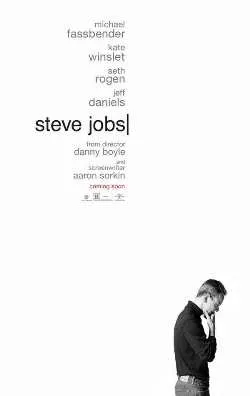Historical accuracy of Steve Jobs

Historical accuracy of Steve Jobs

Characters
Steve Jobs
Fassbender's portrayal captures the intensity, vision, and often difficult personality described in biographies. However, some who knew Jobs felt it overemphasized the negative and missed his charisma. The specific conversations shown are largely invented for the film's structure.
Joanna Hoffman
Based on the real Joanna Hoffman, head of Mac marketing. Winslet captures her role as a close colleague who could stand up to Jobs. Hoffman confirmed she was close to Jobs, though Winslet noted the character is also a composite representing other women in Jobs' life.
Steve Wozniak
Rogen portrays Wozniak accurately as the engineering mind behind early Apple, seeking recognition for the Apple II team. However, Wozniak himself stated the confrontational scenes depicted backstage before launches never happened, though they reflected underlying sentiments he held.
John Sculley
Daniels portrays Sculley as the Pepsi executive brought in by Jobs, later involved in his ousting. Sculley confirmed he consulted with Sorkin and felt Daniels captured his feelings, but stated the confrontational backstage meetings in the film never occurred; they lost touch after Jobs left Apple.
Andy Hertzfeld
Based on the real Apple software engineer. His presence at the launches and technical role are accurate, but specific backstage interactions are likely part of the film's dramatic structure. He did lend Lisa Brennan-Jobs money later in life, but not under the circumstances shown.
Chrisann Brennan
Based on the real Chrisann Brennan. Her conflict with Jobs over financial support and acknowledgement of Lisa is based on reality, but the confrontational scenes backstage are fictionalized timings.
More characters
Lisa Brennan-Jobs
Portrayed at ages 5, 9, and 19. The film accurately depicts Jobs' initial denial of paternity and their subsequent complex, often difficult relationship. However, specific interactions (like the MacPaint scene) and reconciliations depicted backstage are fictionalized.
Joel Pforzheimer
A fictional character representing the journalists who covered Jobs throughout his career, used as a device for exposition and interaction within the film's structure. Played by John Ortiz.
Story
Structured around 3 backstage product launches
This is the core dramatic invention. Sorkin used these moments to stage confrontations representing conflicts that spanned years. Key figures like Wozniak and Sculley confirmed they were not present or having these arguments at these specific times.
Conflict over Mac voice demo failing (1984)
While technical issues before launches were common, the specific drama around the "Hello" demo failing minutes before the launch is likely heightened or fabricated for tension.
Wozniak demands recognition for Apple II team
Wozniak did feel the Apple II team was underappreciated, but he confirmed his confrontations with Jobs about this did not happen backstage at these launches as depicted.
Jobs denies paternity / Conflict with Chrisann Brennan
Jobs did initially deny paternity of Lisa and had conflicts with Brennan over support. Staging these confrontations directly before launches is fictional license.
Jobs' complex relationship with Lisa evolving over launches
The film accurately reflects their difficult relationship and eventual reconciliation. However, the specific interactions and the artistic reconciliation involving the MacPaint drawing are fictionalized plot points.
Flashbacks to Jobs' ousting from Apple / Sculley conflict
The power struggle with CEO John Sculley and the board, leading to Jobs leaving Apple in 1985, is a historical event, shown here via flashbacks triggered by imagined backstage confrontations.
Confrontation with Sculley before NeXT launch (1988)
Sculley stated he and Jobs did not speak again after Jobs left Apple, making their encounters at the NeXT and iMac launches entirely fictional.
NeXT computer not fully ready at launch (1988)
It's historically accurate that the NeXT operating system and hardware were not fully complete at the time of its elaborate launch event. The film uses this fact within its fictional backstage narrative.
Joanna Hoffman as moral conscience / "Work Wrangler"
Hoffman was known as one of the few people who could effectively manage Jobs. The film accurately portrays this dynamic, using her character as Jobs' confidante and reality check throughout the fictional backstage scenes.
Jobs' focus on control and product aesthetics
The film strongly reflects Jobs' documented perfectionism, obsession with design details, and demanding nature regarding product presentation.
Jobs believes he was denied Time "Man of the Year" cover
Jobs did believe the Time article revealing his paternity denial cost him the cover, which instead went to "The Computer." Isaacson's biography suggests the computer was always the intended subject. The film depicts Jobs' belief accurately.
Reconciliation with Lisa before iMac launch (1998)
While their relationship improved over time, the specific heartwarming reconciliation depicted involving the abstract drawing and the Walkman just before the iMac launch is a fictionalized culmination.
Setting
Backstage environments of launches (1984, 1988, 1998)
Filmed partly in the actual locations (e.g., Flint Center, Davies Symphony Hall) or accurate recreations, capturing the chaotic, high-pressure backstage atmosphere before major tech unveilings.
Depiction of product launch venues
Accurately represents the scale and architecture of the venues used for the Macintosh, NeXT, and iMac launches.
Period-specific technology and props
Features accurate representations of the computers (Macintosh, NeXT Cube, iMac G3), peripherals, and general tech props appropriate for each era (1984, 1988, 1998).
Costumes and styling for each era
Wardrobe accurately reflects the changing styles from the mid-1980s to the late 1990s, including Jobs' eventual adoption of his iconic black turtleneck.
Atmosphere of high-stakes tech events
Successfully conveys the tension, excitement, and immense pressure surrounding these pivotal product launches that defined Jobs' career and Apple's trajectory.
